According to a study conducted by the NSF (National Sanitation Foundation) to find out what areas of the home had the most germs, the kitchen came out on top. Study participants were asked to swap different areas of the home that were tested for coliform bacteria (E. coli, Salmonella), yeast, and mold.
From germs and bacteria to dust and dirt, your kitchen can look clean and still be dirty. While it is possible to clean some of these things, for others it is often best to just replace them. Ready to find out what is hiding in your kitchen? Below, is our Cass Plumbing top 10 list.
1. Kitchen Sinks: 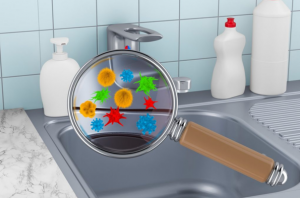 Your kitchen sink might look spotless, but there could be bacteria and germs in the cracks and crevices and in your garbage disposal. The NSF study discovered that 45% of kitchen sinks they tested contained some type of coliform bacteria, which could also indicate fecal contamination.
Your kitchen sink might look spotless, but there could be bacteria and germs in the cracks and crevices and in your garbage disposal. The NSF study discovered that 45% of kitchen sinks they tested contained some type of coliform bacteria, which could also indicate fecal contamination.
You should take the time to disinfect the sink at least once a day like after dinner but before doing dishes by hand. There are plenty of anti-bacterial kitchen cleaners that are great to use. Make sure to spray around the sides of the sink and don’t forget to spray the faucet handle and spray nozzle too.
2. Dish Towels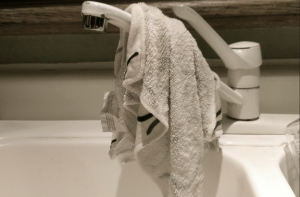 : If you use dish towels to dry dishes or wipe down your counters, they can be full of bacteria and germs even if they do not smell. Plus, mold and mildew can start to grow on the dish towels from all that moisture you are wiping up.
: If you use dish towels to dry dishes or wipe down your counters, they can be full of bacteria and germs even if they do not smell. Plus, mold and mildew can start to grow on the dish towels from all that moisture you are wiping up.
It is best to change towels frequently. Use new ones each time you dry off dishes or wipe off your counters. Take care to not wipe the counters off and then dry your dishes, as you will only be spreading whatever bacteria and germs that were on the counters onto your clean dishes.
After using dish towels, hang them up to fully dry, and then toss them into the dirty laundry. Wash them once a week using bleach and hot water to kill bacteria and germs.
3. Sponges: 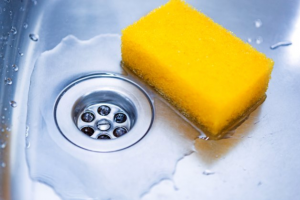 Sponges are one of the dirtiest thing you will find in your kitchen. Just like dish towels, they can be full of bacteria and germs. Mold and mildew can also be a problem because sponges take longer to dry than towels.
Sponges are one of the dirtiest thing you will find in your kitchen. Just like dish towels, they can be full of bacteria and germs. Mold and mildew can also be a problem because sponges take longer to dry than towels.
You should have one sponge for washing dishes and another sponge for cleaning counters. Keep the sponges separate to avoid bacteria and germs from the counters getting onto your dishes. For instance, you might use two different colors of sponges to help remember which is which, like a yellow one for cleaning and a blue one for dishes.
Sponges should be replaced weekly, even if they are still in great shape. You can toss them into your washer with your dish towel and wash them in hot water with some bleach.
- Fun Fact: The NSF study discovered that more than 75% of dish towels and sponges contained some type of coliform bacteria.
4. Kitchen Counters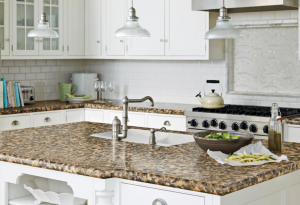 : Think about all the things that get put onto kitchen counters like purses, backpacks, grocery bags, mail, and so on. Do you take the time to clean the counters after putting away those things and before you start using the counter to prepare food?
: Think about all the things that get put onto kitchen counters like purses, backpacks, grocery bags, mail, and so on. Do you take the time to clean the counters after putting away those things and before you start using the counter to prepare food?
Most people do not. Any bacteria and germs on those other items are transferred right onto the counters. If you place food onto the surface without cleaning it, it is transferred to your food. The NSF study discovered that 32% of counters had coliform bacteria on them.1
Before preparing food, use an anti-bacterial and food-safe cleaning product to spray and wipe off counters. Get into the habit of doing this daily, even if you are not cooking, to help keep bacteria and germs in check.
5. Coffee/Tea Maker Reservoirs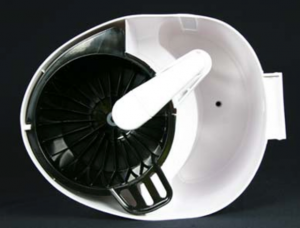 : Your coffee or tea maker reservoir can be an ideal breeding ground for bacteria, germs, mold, and mildew. The water rarely fully dries out, and the heat from the appliance helps keep the reservoir humid.
: Your coffee or tea maker reservoir can be an ideal breeding ground for bacteria, germs, mold, and mildew. The water rarely fully dries out, and the heat from the appliance helps keep the reservoir humid.
After every use, wash out the coffee or teapot with anti-bacterial soap. Open the lid to the reservoir to allow air inside so it can dry out. Get into the habit of cleaning your coffee or tea maker once a week, following the manufacturer’s cleaning instructions.
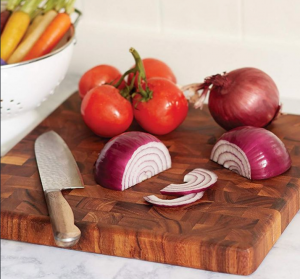 6. Wooden Cutting Boards: Wooden cutting boards can look more appealing than plastic ones. Yet, they are difficult to keep clean. You cannot sanitize wooden cutting boards in your dishwasher. If you just used it to cut up a chicken and even if you washed it off, there could still be bacteria that causes Salmonella left on the cutting board.
6. Wooden Cutting Boards: Wooden cutting boards can look more appealing than plastic ones. Yet, they are difficult to keep clean. You cannot sanitize wooden cutting boards in your dishwasher. If you just used it to cut up a chicken and even if you washed it off, there could still be bacteria that causes Salmonella left on the cutting board.
Use your wooden cutting board for fruits and vegetables since these things won’t leave harmful bacteria on the surface that can make you sick or even kill you. Get a set of plastic cutting boards to use for beef, poultry, pork, and fish that you can toss in the dishwasher and sanitize.
- Fun Fact: The NSF study found that 18% of cutting boards contained coliform bacteria.1
7. Can Openers: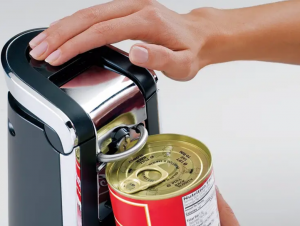 How many different cans of food do you open with your can opener? Not to mention, if your hands were dirty when you used it, any germs or bacteria are transferred onto the handles. If you keep your can opener in a drawer with other utensils, you can easily spread bacteria and germs around to your clean utensils.
How many different cans of food do you open with your can opener? Not to mention, if your hands were dirty when you used it, any germs or bacteria are transferred onto the handles. If you keep your can opener in a drawer with other utensils, you can easily spread bacteria and germs around to your clean utensils.
Whenever you use your can opener, get into the habit of washing it. Many types can go into the dishwasher and are top-rack safe. You can also wash it in hot, soapy dishwater in the sink. For electric can openers, use anti-bacterial wipes to clean them; just make sure to unplug it first.
8. Salt and Pepper Grinders/Shakers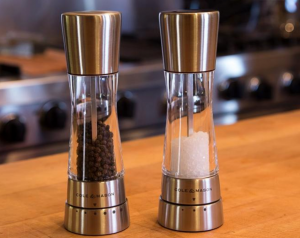 : When was the last time you washed these commonly used items? Most people just fill them back up when they need refilling. The next time your grinders or shakers need to be refilled, take the time to wash them first. They are frequently touched while cooking and eating, so it is easy to spread germs and bacteria around.
: When was the last time you washed these commonly used items? Most people just fill them back up when they need refilling. The next time your grinders or shakers need to be refilled, take the time to wash them first. They are frequently touched while cooking and eating, so it is easy to spread germs and bacteria around.
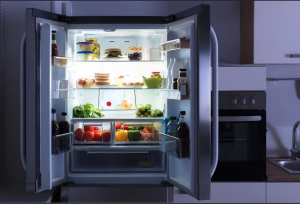 8. Refrigerators: There can be all sorts of forgotten science experiments found in refrigerators. Mold, mildew, and other “fuzzy” growth on spoiled food can be discovered. If the food was stored in a plastic container or reusable plastic bag, it is best to just toss the container or bag out. For glass containers, make sure to wash these in your dishwasher and choose the sanitation cycle to kill any germs and bacteria.
8. Refrigerators: There can be all sorts of forgotten science experiments found in refrigerators. Mold, mildew, and other “fuzzy” growth on spoiled food can be discovered. If the food was stored in a plastic container or reusable plastic bag, it is best to just toss the container or bag out. For glass containers, make sure to wash these in your dishwasher and choose the sanitation cycle to kill any germs and bacteria.
Make it a weekly habit to clean your refrigerator. Go through and get rid of leftovers, expired bottles of condiments, and other food before it turns into a science experiment. When buying groceries, only buy what fresh fruit and vegetables you will eat during the week. With packaged items, check their expiration dates and, once they expire, toss them.
Use anti-bacterial wipes and wipe down drawers, doors, and handles to help keep the refrigerator clean. Many drawers are removable, so you could also take them out and wash them with hot, soapy anti-bacterial dish soap.
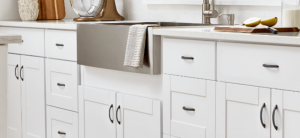 9. Touchpads, Handles, and Knobs: All these things found on your appliances, kitchen cabinets, and kitchen drawers can get dirty with food, bacteria, germs, dirt, etc. You would be surprised by how many people are preparing food and then they open a drawer to grab a knife or touch the microwave door and end up transferring bacteria from one surface to the next.
9. Touchpads, Handles, and Knobs: All these things found on your appliances, kitchen cabinets, and kitchen drawers can get dirty with food, bacteria, germs, dirt, etc. You would be surprised by how many people are preparing food and then they open a drawer to grab a knife or touch the microwave door and end up transferring bacteria from one surface to the next.
After preparing food, use anti-bacterial wipes to wipe off touchpads, handles, and knobs. This should be done after every meal every day.
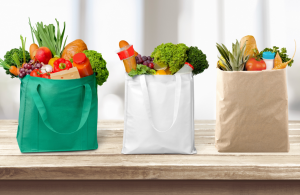 10. Reusable Plastic Bags, Shopping Bags, Lunch Boxes, Water Bottles: Anything that is reusable can have bacteria and germs if the item is not washed and sanitized frequently. Lunch boxes and water bottles should be washed and sanitized daily. Reusable plastic bags and shopping bags should be washed and sanitized after every use.
10. Reusable Plastic Bags, Shopping Bags, Lunch Boxes, Water Bottles: Anything that is reusable can have bacteria and germs if the item is not washed and sanitized frequently. Lunch boxes and water bottles should be washed and sanitized daily. Reusable plastic bags and shopping bags should be washed and sanitized after every use.
Were you surprised by our top 10 dirtiest things hiding in your kitchen? We hope you use our cleaning tips to help keep your kitchen cleaner and germs and bacteria in check.
 If you experience kitchen sink plumbing problems, need kitchen faucet repair, or have a clogged kitchen sink, contact the experienced kitchen plumbers at Cass Plumbing of Tampa Bay today at (813) 265-9200! We service the Greater Tampa Bay 24 hours a day, 7 days a week.
If you experience kitchen sink plumbing problems, need kitchen faucet repair, or have a clogged kitchen sink, contact the experienced kitchen plumbers at Cass Plumbing of Tampa Bay today at (813) 265-9200! We service the Greater Tampa Bay 24 hours a day, 7 days a week.






